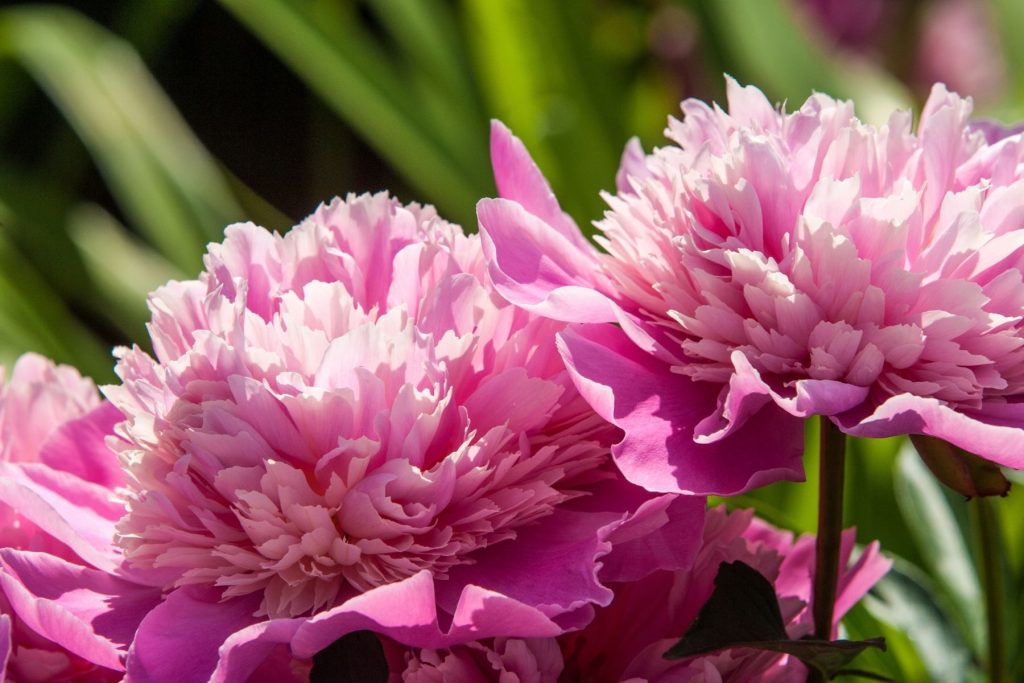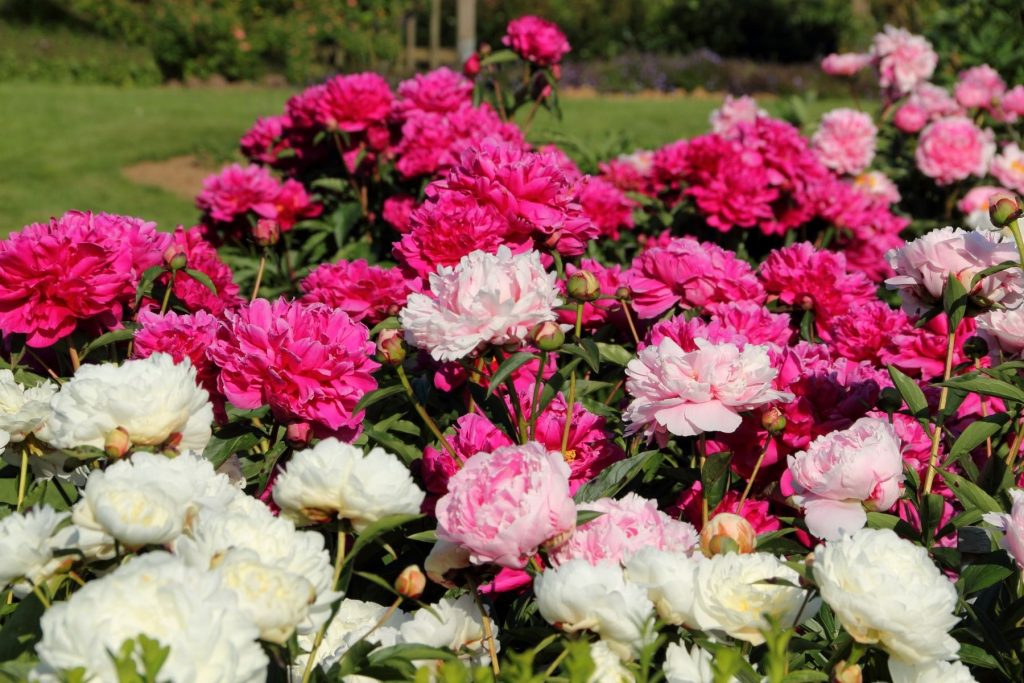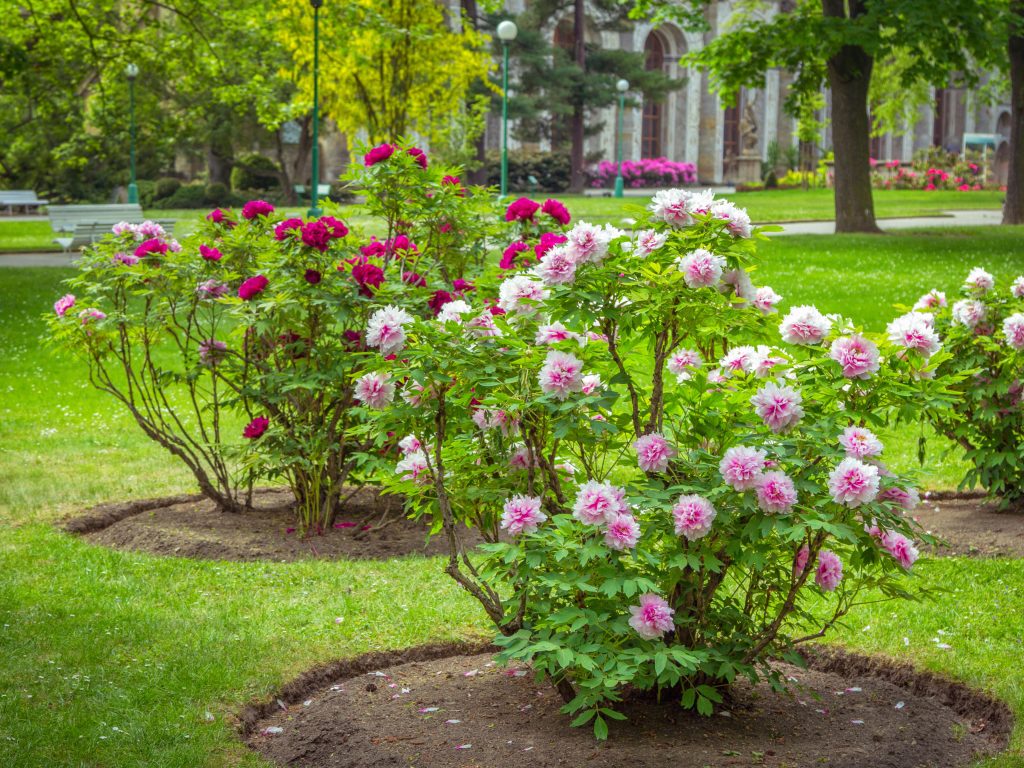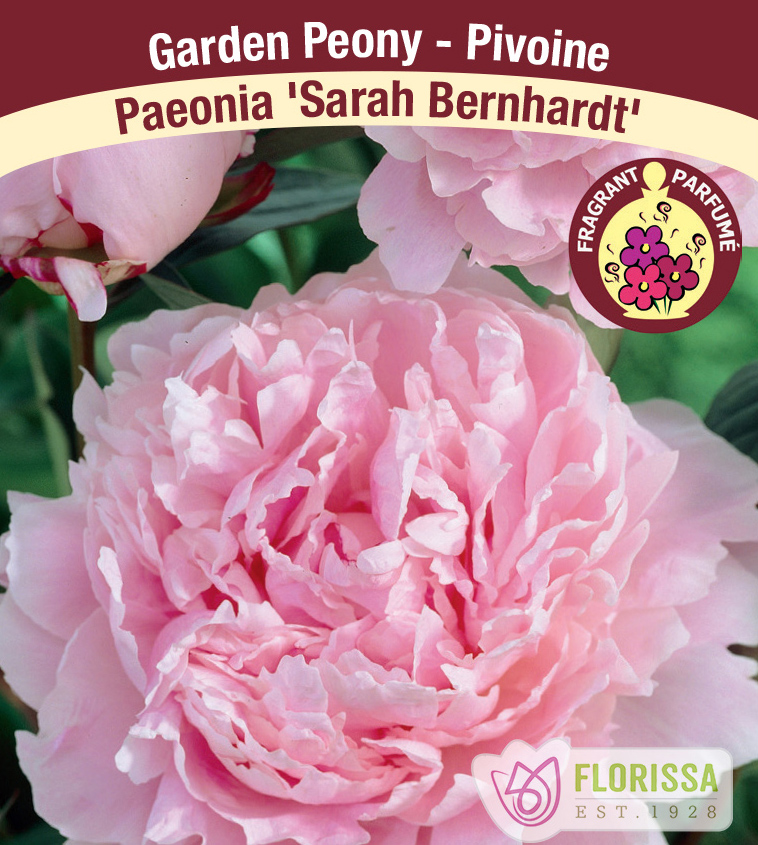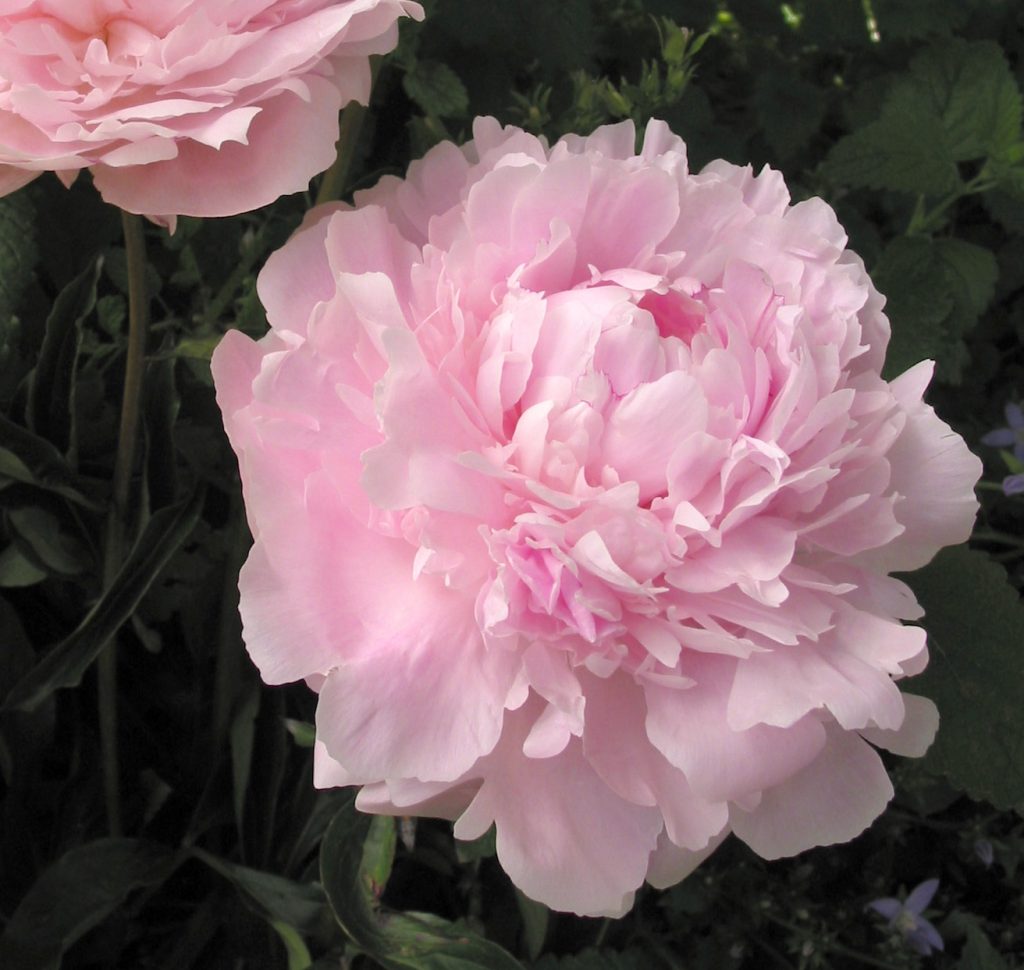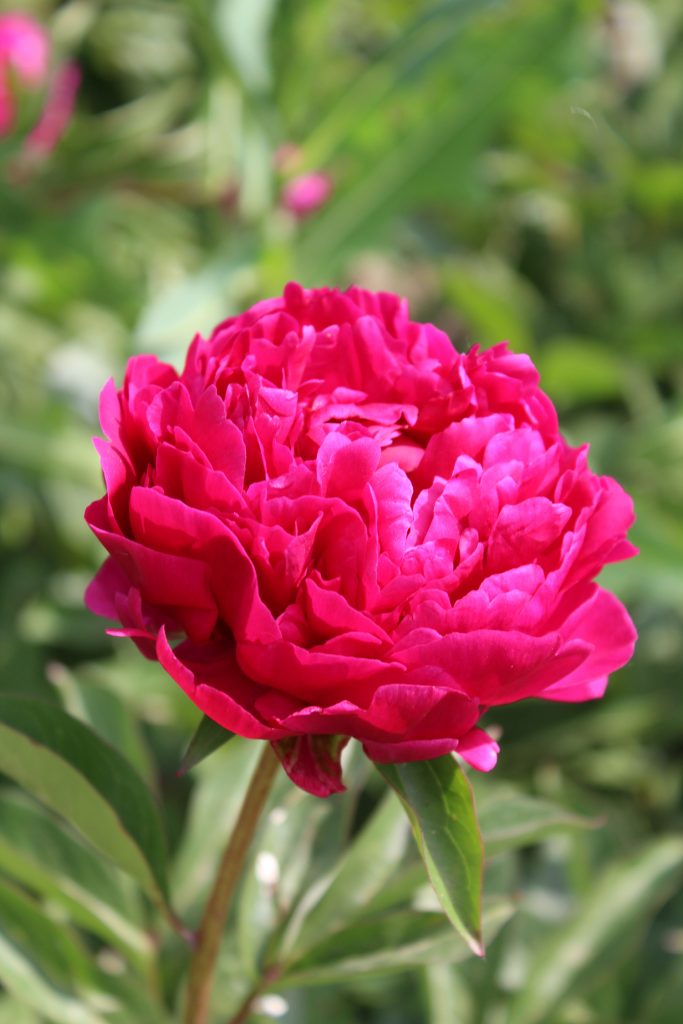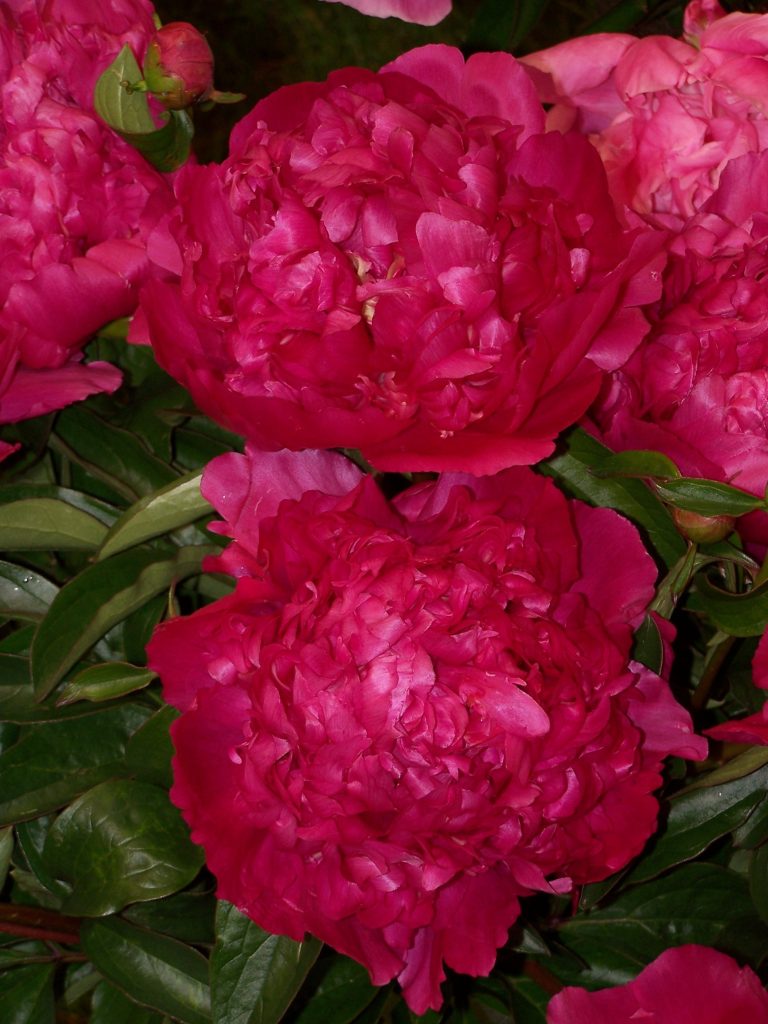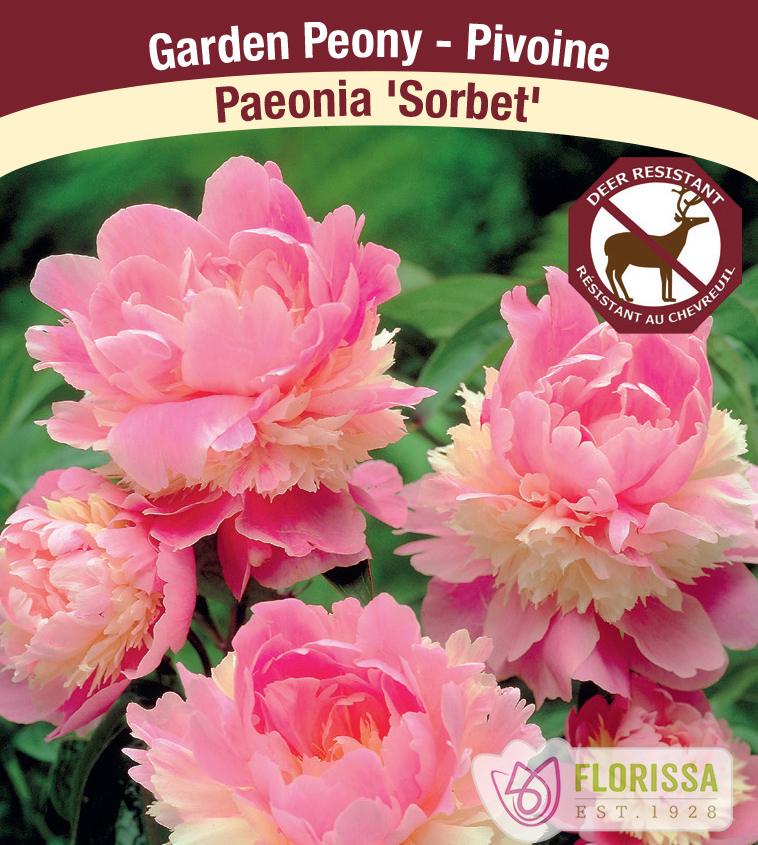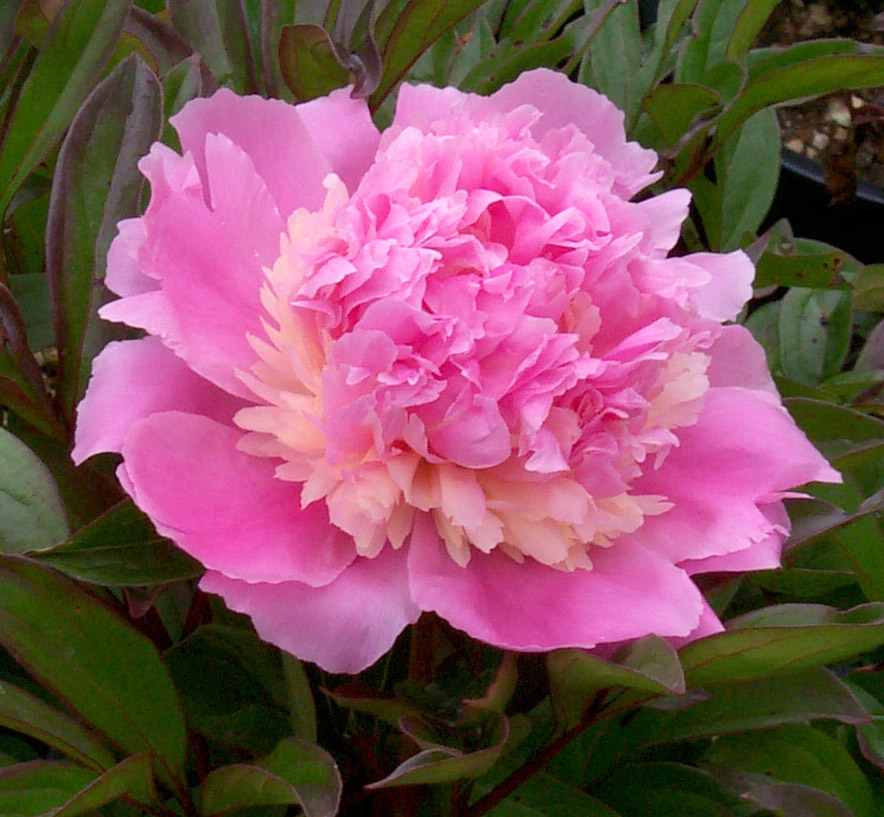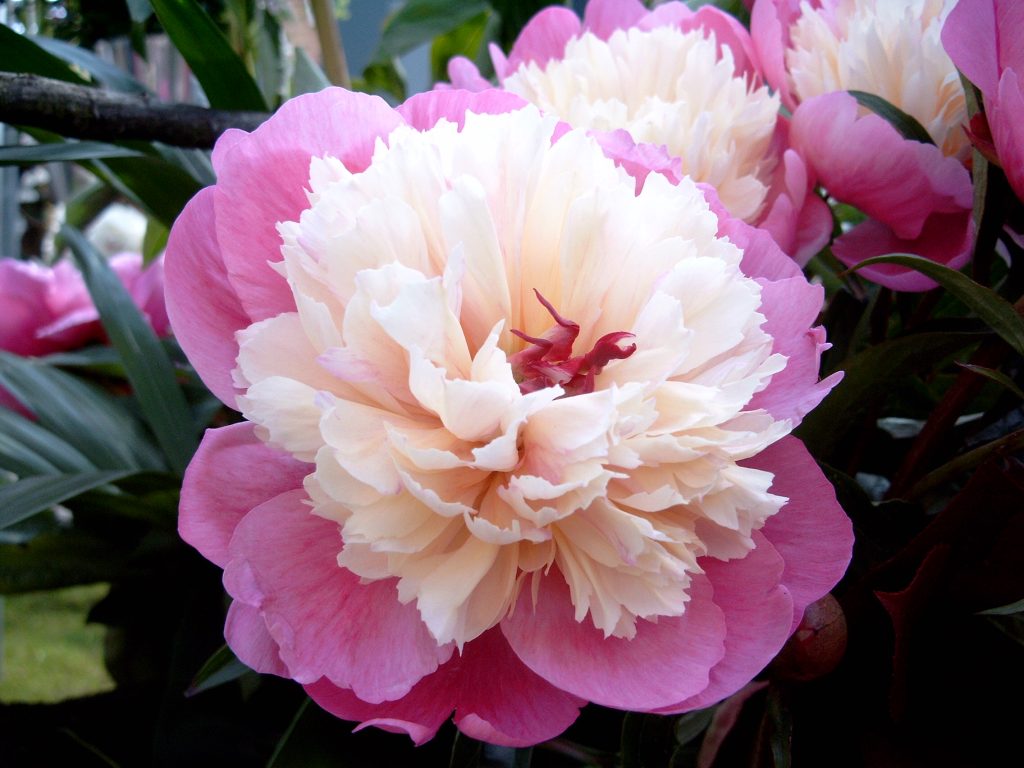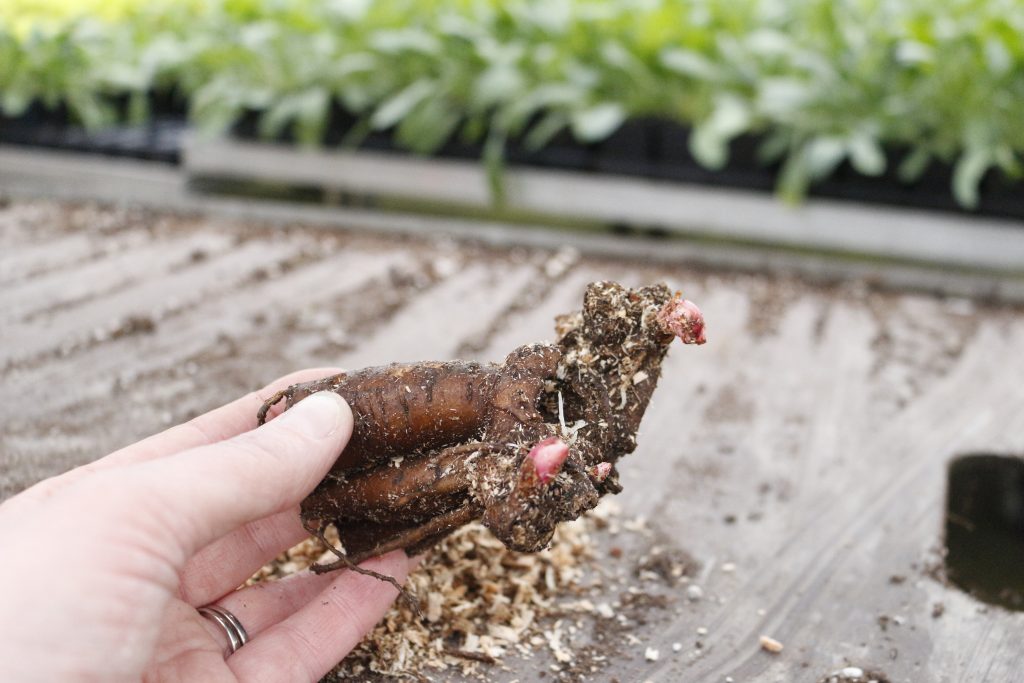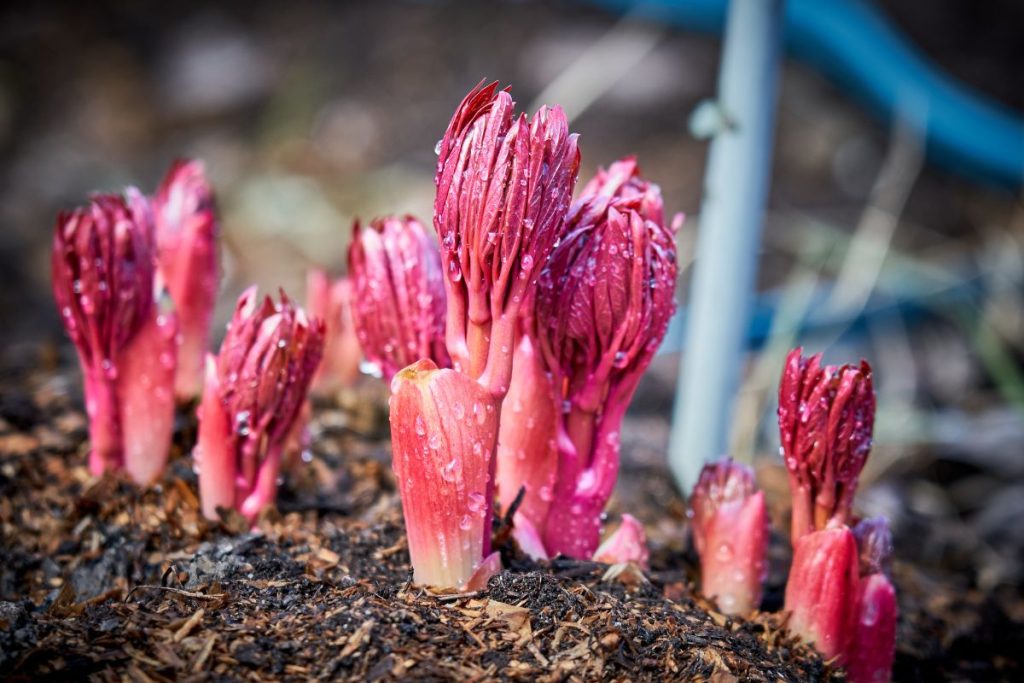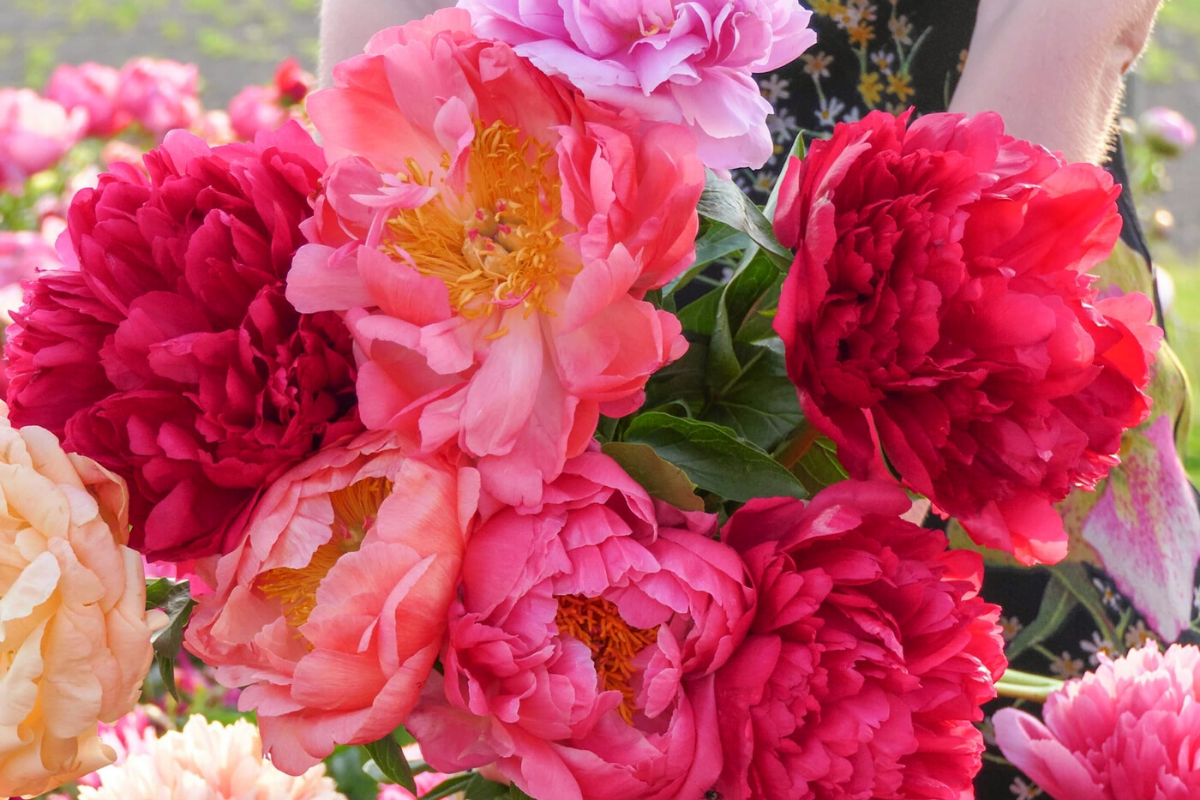
Peony Basics
Grow Beautiful Peonies! Luscious soft and airy blooms with sublime fragrance, peonies are popular with just about everyone. A gardener’s dream plant, they’ve been in cultivation for over 200 years and are exceptionally long-lived. It’s not uncommon to hear of a peony plant celebrating 100 years or more in a garden landscape. They are vigorous, resilient, and best of all, so very easy to grow.
Their season begins with reddish shoots and leaves emerging from the ground by mid-spring. Peonies flower for a few weeks from late spring to early summer – April, May, and June. You can enjoy their beauty throughout these months by including early, mid, and late-blooming varieties in your garden. After flowering, the handsome foliage adds texture to the landscape through the summer before dying back to the ground in autumn. Extremely hardy, peonies grow best in cooler climates, benefiting from a period of winter chill.
Plant new peony roots in the late spring after all chance of frost has passed so that they can establish themselves throughout the summer. While they may grow foliage, it is unlikely they will flower during the first year of planting. It can take up to two growing seasons for a newly planted peony to produce those showy fragrant blossoms – oh, but they are well worth the wait. Once your peony plant starts flowering, you’ll be rewarded with more and more blossoms each year.
Peonies are sun lovers. Choose a site that receives at least five to six hours of sunlight each day. Light afternoon shade can be beneficial, encouraging blossoms to keep longer. Avoid sites where the soil is wet or has standing water at any time of year. Peonies prefer fertile, moist, well-draining soils, though they will adapt to other soil conditions. Enhance heavy clay or sandy soils at planting time with well-rotted organic compost to boost moisture retention. Most importantly, choose a site where you can be sure to enjoy your peonies and keep in mind, that established peonies resent being moved.
Florissa’s Tip
Happiest when planted directly into the garden, peonies can be grown in containers if given the proper attention. Peonies in containers are more susceptible to frost, wind, and water damage. In cold winter climates, be sure to bring potted peonies into a shelter to protect them from freezing temperatures. Remember to water peonies growing in containers more frequently to keep the soil moist.
Table of Contents
Sarah Bernhardt
Peony Sarah Bernhardt is one of the most popular cultivars ever introduced with sumptuous and wonderfully fragrant light rose pink double blossoms. Delicate pink inner petals appear silver tipped and loosely ruffled. The 20 cm (8”) blooms are breath-taking every spring. Named after the French stage actress who was called “the queen of the pose and the princess of the gesture” – these blooms make excellent cut flowers with a long vase life. Recipient of the award of garden merit from the Royal Horticulture Society. Grows 100 cm (40”) tall. Hardy to Zone 2.
Adolphe Rousseau
Deep garnet red rose-shaped blooms with golden yellow stamens are set off by the attractive dark green foliage. Peony Adolphe Rosseau is one of the most beautiful early-blooming dark peonies of the season. A profuse bloomer with strong sturdy stems to accommodate more and more flowers with each passing year. Gorgeous in the mixed border alongside Leucanthemum and Iris germanica, this historic cultivar has a moderately spicy fragrance. Grows to 100 cm (40”) tall. Hardy to Zone 2.
Sorbet
Large blossoms with three layers of confectionary pink and cream petals, Peony Sorbet has an intriguing look. The base is a layer of lightly curled pink petals, topped with layer upon layer of exquisite ivory cream petals, and crowned with an extra tuft of bright pink fluff. Elegant spring blooms up to 15 cm (6”) wide and tall on sturdy strong stems. Set the table for lunch, invite a few friends and marvel over these fascinating flowers with coffee and dessert. Grows 100 cm (40”) tall. Hardy to Zone 2.
Planting Peonies
Dig a hole 30 cm (12”) deep and mix in well-rotted organic compost if you are enhancing the soil. If you desire, you can also add a handful of bone meal or good general fertilizer. Fill the hole back in with the mixed soil and set the roots with “eyes” or next year’s growing buds facing up, and no more than 5 cm (2”) below the soil surface. Peonies that are planted too deeply may establish and grow handsome foliage, but they will fail to flower. If you are planting a group of peonies, keep in mind that they can grow to 30-100 cm (12-40”) in height and you will want to space them 80-90 cm (32-36”) apart to ensure good air circulation around the plants.
Deer-resistant and drought-tolerant peonies are very low maintenance once established. Provide them excellent drainage and begin watering in the spring if your garden goes for more than two weeks without rain. During dry summer months, a deep thorough weekly watering ensures vigorous plants the following year. Support plants with profuse blooms, especially if you live in a rainy climate, with a peony ring. Staking can also help protect your peonies from strong winds too. Peonies don’t require pruning, in the fall, simply cut back any remaining foliage to the ground.
Peony stems will form 3 buds – the main bud with two side buds at its base. If you want larger flowers, gently remove the side buds on either side of the main bud. Buds secrete a sweet sticky nectar that attracts ants and other pollinators as they form and swell. Ants do not harm the plant or its blossoms, so avoid spraying ants crawling on peony buds. If you are cutting peonies for bouquets give the blooms a gentle shake to dismiss any unwanted insects.
Florissa’s Tip
If you’re having difficulty bringing your peony plants into bloom, it could be that the plants are still young and establishing, or that the roots are planted too deep. It may also be that the plant is not receiving enough sunlight, or that nitrogren in the soil is too heavy.



